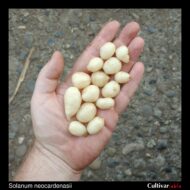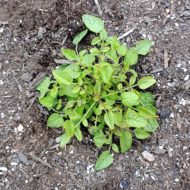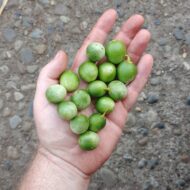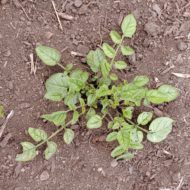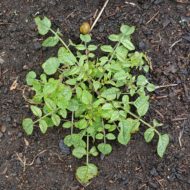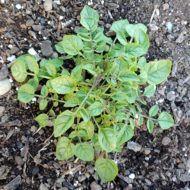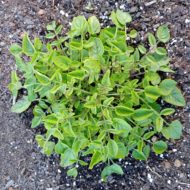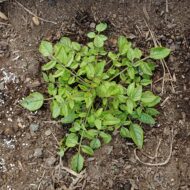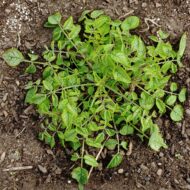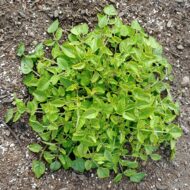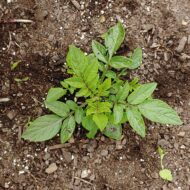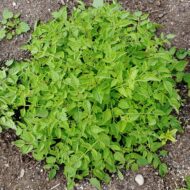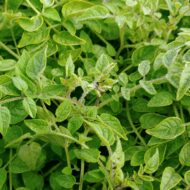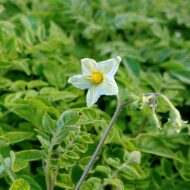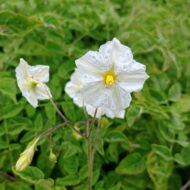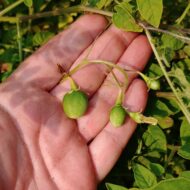No products in the cart.
Solanum neocardenasii
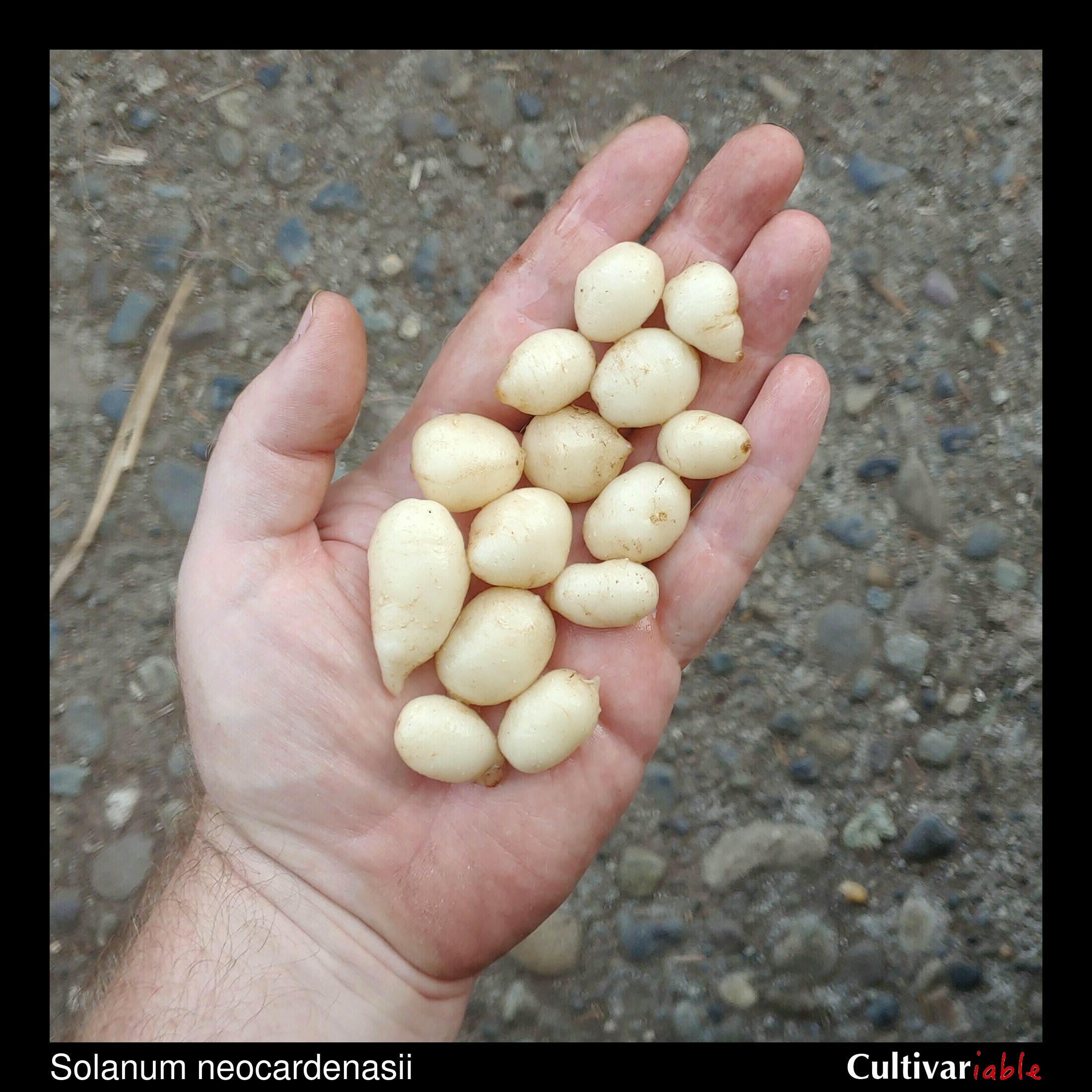
| Common Names | Papa de zorro |
| Code | ncd |
| Synonyms | |
| Clade | Neo |
| Series | Tuberosa |
| Ploidy | Diploid (2x) |
| EBN | 2 |
| Tuberization Photoperiod | Short Day |
| Self-compatibility | No |
| Nuclear Genome | Unknown |
| Cytoplasmic Genome | Unknown |
| Citation | Hawkes & Hjerting: Bot. J. Linn. Soc. 86: 411. 1983. |
Description
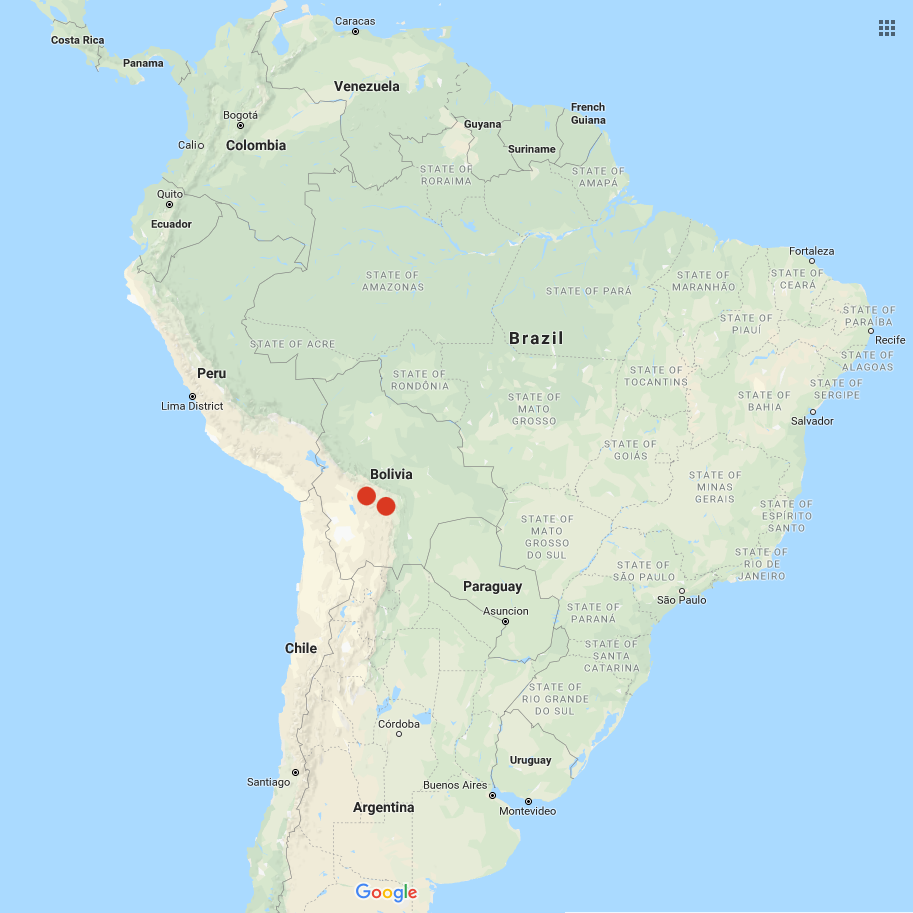
Solanum neocardenasii is a dryland species from eastern Bolivia. Plants roughly six inches to a foot tall. Stolons about a foot long, although often less than that in my experience. Tubers small, less than an inch, round to ovoid. Flowers white. Berries round, about half an inch in diameter.
The specific epithet, neocardenasii, honors Ecuadorian botanist Gustavo Adolfo Cárdenas. The prefix neo- is added because the name S. cardenasii had previously been used for some members of what is now S. tuberosum group Andigenum. While there is no completely standardized pronunciation for scientific names, the most common way to pronounce this species is probably so-LAY-num nee-oh-kar-DEN-ahs-ee-ee.
S. neocardenasii and its close relative S. stipuloideum appear to be the closest South American relatives to the North American wild potato species (Spooner 2018).
This species has both type A and B glandular trichomes which provide resistance to aphids by entrapment, similar to S. berthaultii (Lapointe 1986).
Subramanian (2017) found that at least some accessions of this species have unusually low dry matter content.
This species has been tentatively classified as critically endangered on the IUCN Red List (Cadima 2014).
Resistances
| Condition | Type | Level of Resistance | Source |
|---|---|---|---|
| Alfalfa Mosaic Virus (AMV) | Virus | Resistant | Horvath 1989 |
| Globodera pallida (Pale Cyst Nematode) | Invertebrate | Resistant | Castelli 2003 |
| Globodera rostochiensis (Potato Cyst/Golden Nematode) | Invertebrate | Resistant | Castelli 2003 |
| Leptinotarsa decemlineata (Colorado Potato Beetle) | Invertebrate | Resistant | Dimock 1986 |
| Myzus persicae (Green Peach Aphid) | Invertebrate | Resistant | Lapointe 1986 |
| Phytophthora infestans (Late Blight) | Fungus | Not resistant | Bachmann-Pfabe 2019 |
| Phytophthora infestans (Late Blight) | Fungus | Some resistance | Karki 2020 |
| Potato Virus Y (PVY) | Virus | Resistant | Horvath 1989 |
Glykoalkaloid content
I have found no published measurements of glycoalkaloids in this species. The tubers that I have tasted were mildly sour, easily detectable just by licking the skin. I have found that a sour flavor is prevalent in other species where the primary glycoalkaloid is known to be tomatine, so that may be the case here as well.
Images
Cultivation
I have found this species very difficult to germinate. In addition, the seedlings are slow growing and vulnerable to pests. Overall, this is one of the most challenging species to get started.
I was surprised to discover that this species appears to be day neutral. It senesced naturally here in September after four months of growth, having produced both berries and tubers.
Accessions Evaluated
The following accessions were examined to prepare this profile. I have evaluated 2/2 accessions currently available from the US potato genebank.
PI 498129
After three attempts, I had no success with this accession and gave up. Just recently, I noticed a single seedling growing in the pot that had been abandoned on an outdoor shelf.
PI 502642
On the first attempt, nothing; for the second attempt, I got low germination. The seedlings germinated over several months and only in outdoor conditions. Give this accession plenty of time to germinate.
Breeding
Crosses with S. tuberosum
| Female | Male | Berry Set | Seed Set | Germination | Ploidy | Source |
| S. tuberosum | S. neocardenasii | Low | None | Jackson 1999 | ||
| S. neocardenasii | S. tuberosum | None | None | Jackson 1999 |
Crosses with other species
| Female | Male | Berry Set | Seed Set | Germination | Ploidy | Source |
References
Solanum neocardenasii at Solanaceae Source

